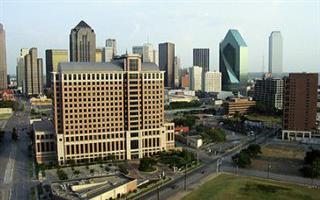
DALLAS, TX - North Texas' growth slowed for the second consecutive year in 2008 as the region's number of new residents fell below the 100,000 mark for the first time in 13 years. The area added more than 92,000 people last year, to reach more than 6.6 million for the 16-county area tracked by the North Central Texas Council of Governments. But cities across the region saw much smaller increases than they became accustomed to during the dramatic population booms earlier this decade. The population estimates were detailed Thursday in a report released by the agency.
Regional and city officials attributed much of the slowdown in growth to a deepening recession and national mortgage crisis. The number of new single-family homes in the area, for instance, fell 30 percent last year. More than 27,000 new single-family homes were added in 2008 compared with 39,000 in 2007. Last year saw the lowest number of new homes since 1995.
"We just don't have as many people coming in to the region," said Duane Dankesreiter, the council's research manager. "Our job growth has slowed. It's definitely based on the economic conditions."
The council of governments bases its estimates on housing statistics, and its research reflects market conditions.
Population and growth estimates play a major role in how regional planners plot out and seek financing for major projects such as highway construction and renovations. But Dankesreiter said the second consecutive slowdown in growth shouldn't affect long-term planning.
"It goes in cycles," he said. "You know we're going to continue to grow. We had the boom times in 2006. We knew that we were just growing at a pretty large rate. Now things are coming back down to normal. It's the ebb and flow of growth."
According to U.S. Census Bureau estimates released earlier this year, the Dallas-Fort Worth area added more people from July 2007 to July 2008 than any other metropolitan area in the nation. The region saw an increase of 146,532 people during that period, according to the bureau's estimates. But the time period reflected conditions present before Texas experienced the job losses and economic woes that have worsened in the first part of this year.
In the Council of Governments report, Fort Worth claimed the most new residents among North Texas cities. About 17,400 people moved to Cowtown last year. Dallas came in second with an increase of 6,000 people. Collin County suburbs McKinney, Frisco and Plano rounded out the top five cities for gains in the number of new residents.
Fort Worth Mayor Mike Moncrief said several factors draw people to his city, including the recent boom in natural gas production.
"Obviously, some of that growth is due to the Barnett Shale activity and all of the jobs and the ripple effect caused by that industry," Moncrief said. "It has, to a degree, insulated our city through the new wealth that has been created for thousands of our residents with the income from that gas."
Multi-family housing played a role in both increases and decreases in some cities.
In 2008, more than 13,200 units were added compared with 11,600 the year before. Officials in Garland and Addison, the only cities to see population decreases, attributed their loss in residents to the destruction of apartment complexes.
In Addison, a developer demolished nine apartment complexes along Brookhaven Club drive to make way for a new luxury development, Vitruvian Park. Officials expect that project to more than make up for the 1,900 people lost last year.
"This is an intentional kind of reduction that is temporary," said City Manager Ron Whitehead.
Garland officials saw a decline of 100 people, which they attribute to the destruction of an apartment complex. That demolition will make room for the connection of the Bush Turnpike and Interstate 30.
Farmers Branch, meanwhile, had the biggest increase in growth from 2007 to 2008, according to data provided by the Council of Governments. City officials attributed the 8.17 percent increase in population to the construction of new high-end, multi-family housing units.
"They seem to be popular with urban professionals who have been attracted to this area because of the new housing inventory," said Andy Gillies, the city's planning director.
Dankesreiter said several of the apartment units had been in the construction pipeline for awhile.
According to the report, Frisco is now the region's 12th city with more than 100,000 residents. The Collin County suburb had less than 34,000 in 2000. Last year, it had the highest growth among larger cities. But among that same group, Frisco also had the biggest decline in growth from 2007 to 2008.
"When you get used to the exponential growth rate and then you just look at a single-digit growth rate, it sort of shocks people," said Jeff Witt, the city's comprehensive and environmental administrator. "But I think it needs to be pointed out that the growth rate here in Frisco has been astronomical over the last 10 years."
On the other end of the spectrum, Denton saw the largest increase in growth rate change among larger North Texas cities. In 2007, that city grew by 0.47 percent. But last year it grew by 1.13 percent for a total estimated population of 107,250 people.
Source: DallasNews.com